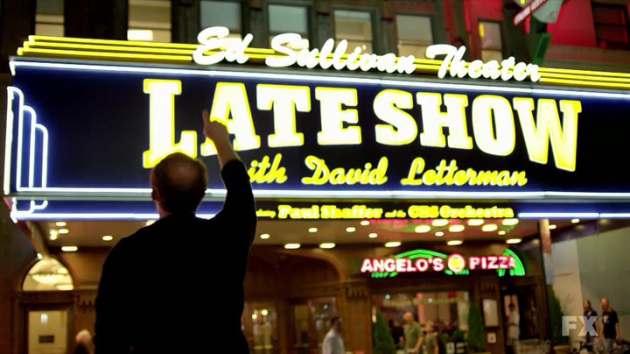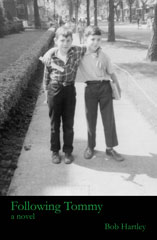Plagiarism as Pedagogy
One of my best students was a plagiarizer. I felt stupid, when I found out—I had known her for two years, and I had worked with her intensively as her thesis adviser, for months. And I wasn’t the one who caught her, either, which was embarrassing because the poets and poems she plagiarized were ones I had told her, specifically, she should read. I had read some of the exact poems she’d ripped off, many times, myself; I had assigned them to her.
So I did everything you’re supposed to do in this situation. I contacted the Dean of Students office. I asked the student, via e-mail, to meet with me, telling her ahead of time that I believed she had committed plagiarism and that we needed to discuss if and how we’d move forward from here… it was very near the end of the semester, and her thesis was supposed to be finished in two weeks.
The Dean of Students office told me they couldn’t force my hand, but that if she had stolen whole sentences without any citation (which she had, in numerous, numerous instances) then there was little question: I should fail her.
Many of my colleagues told me the same: fail her. But that felt wrong to me. And here’s where it gets tricky… there are no official rules for citation in creative writing. Every poet seems to adopt his or her own rules, adding the epigraph “after So-and-So” or italicizing the stolen words, for instance. Moreover, some of our best-loved poems are actually in large part not the poet’s original work: The Waste Land rips off Shakespeare, Marvell, bar songs, ragtime music, etc., etc., but T. S. Eliot didn’t cite those sources, nor can most of us claim that we recognize every single tiny act of “plagiarism” in The Waste Land. But we don’t call Eliot a fraud or a criminal for that… we hail him as a genius, and his poem as the most important of Modernism.
Is it disingenuous to compare an undergrad to T. S. Eliot? Yes, but there were real similarities: every poem in this student’s thesis was more than half her own invention, and she almost never stole from a single source… she stole individual sentences, images, bits of syntax from multiple poets and then welded them together into a convincing new poem that neither felt like “the voice of,” nor addressed the same subjects as the poets from whom she stole.
This is why I hadn’t recognized the images and syntax as someone else’s: they didn’t sound like the poets from whom she stole, they sounded like her. In a way, I was more impressed with her as a writer when I realized what she’d done… I’m not sure I could have done it as convincingly myself. The poems suddenly felt like lies, yes, but they were also even more impressive works of craftsmanship than I had previously realized, as a result of their ability to lie convincingly. Her plagiarism felt like more of a skill than a crime.
Think about this for a minute: in most other art forms, straight-up plagiarism is encouraged early in an artist’s career! You don’t learn to play violin by writing your own songs, you learn it by playing, I dunno, Mozart or whatever. And when you learn to paint, you do it by copying the works of the masters, by learning what it feels like to paint a line like Picasso’s. It’s kind of peculiar, and maybe even reprehensible, that writers value individuality and uniqueness from day one. But I digress…
When I met with the student, she was apologetic and completely distraught. Yes, she admitted, she knew she had been treading on dangerous ground. Yes, she should have asked me whether what she was doing was unethical, and it was for risk of being condemned that she hadn’t. She had chosen to believe that I must have already known she was stealing lines and images from poets, and that I supported and endorsed it, even though she had suspected that I didn’t know (since I definitely hadn’t mentioned it), for months.
It was my fault…
This is when I realized the situation was my fault. Or partly, at least. I had first met the student in a course titled “Influence & Imitation,” which used the practice of copying or mimicking other poets as a means of finding one’s voice, and that took as its foundational premise that there is no such thing as individuality, that nobody is a beautiful or unique snowflake. When designing the course, I hadn’t thought about what might happen if these students continued to use imitation as a generative device beyond the classroom, into their theses, and into the world of publishing. Oops. I had helped to make the monster she’d sewn together.
But it was a beautiful monster. The poems had strengths one rarely sees in undergraduates: They felt whole. They felt unique. They felt like they were doing something that had never been done, in quite the same way, before. And they managed to juggle numerous voices and tones without seeming haphazardly glued together. Partially plagiarized or not, they were better than the vast majority of my other students’ poems.
Using plagiarism as a device, my student had figured out some of the hardest lessons for a young poet to learn… To imagine a good, startling image: that’s easy. To have a large vocabulary: that’s nothing too impressive. To know how to break a line, to understand simile or metaphor, to learn how to employ slant-rhyme or consonance… aren’t these small things compared to the ability to compose a poem that is rhetorically complete and convincing, that feels honest even in its artifice, and that can push a reader through a line of thought or feeling without making the reader feel that he or she has been pushed?
Maybe. Sometimes, I think, we teach our students how to make stunning puzzle pieces but we don’t instruct them on how to put the puzzle together… we leave them in the dark on that. And that’s irresponsible of us. By de-prioritizing freshman-level elements of craft, and allowing my students to steal from other poets in order to focus instead on the less nameable elements that make a poem feel convincing and complete, or that make a poetic persona feel like a real person, I had accidentally bred at least one (and maybe more) plagiarizers. The lesson had come at a huge cost that I had not foreseen, and that was now jeopardizing at least one student’s entire academic career. Shit.
Where do we draw the line?
In some ways it was neither my fault nor the student’s: it was an unfortunate side-effect of an art form that (thankfully!) refuses to make hard and fast rules about what is and isn’t acceptable. At the same time, though, it seems unfair to expect a nineteen- or twenty- or twenty-two-year-old poet to be able to intuit the boundary between “influence” and “plagiarism,” and then to punish them if they step over that line. Because you know what?, most of the significant art forms to have emerged in the past hundred years have deliberately blurred that line: collage, music sampling, erasure, even—I dunno—film itself, where the sheer diversity of people involved in making any film means authorial ownership is basically undefineable: there is no sole author of a film, there is just the film. And don’t we want our students to be participating in the cultural changes and phenomena that define art-making today, to participate in the complication of the notion of authorship?
We do. But how far is too far? When does influence become plagiarism? After five uncited words, verbatim? After stealing any images at all from another poet? But what about easy images: apples and wisteria and blue-skies-representing-freedom, for instance—are those any poet’s property? At what point does it become a purely subjective question of ethics? Many of us wouldn’t feel bad about stealing an image or a snippet of syntax from a dead and already-famous poet, but what about living famous poets? Or what about living non-famous poets? Can we agree that stealing even a few words from a poet who has not yet published a book is unethical? I ask these questions honestly, and with the expectation that many of us agree on the answers, but also to illustrate what a goddamn quagmire the question is.
Wait… what was I talking about?
Ugh, this blog post is a rambling mess… this essay started as a story, remember?
After our meeting, my student worked her ass off. She toiled, and combed through her entire thesis, trying to replace or skew the images, syntax, or diction she borrowed until it was no longer recognizable. She did it for hours, every day, for weeks in the hope that I might pass her with an acceptable grade. Was she always successful in steering clear of what most of us would consider plagiarism? No. Was she successful even two thirds of the time? Actually, no. Did I feel she truly understood, in the end, where the line was between influence and plagiarism; did I think she was standing at a safe distance from that line, even if she didn’t know exactly where it was? Not at all.
But no great poet has gotten great by being safe, or cautious. And hell, in case you couldn’t already tell, I don’t know exactly where the line between influence and plagiarism is either. Besides, we could all stand to be a little bit less possessive of our poems, and a little less sure of our sanctified, inimitable originalities. Once we put our poems in the world, in a very real way they no longer belong to us: They can drink. They can smoke. They can sleep with or break the hearts of or be used and fucked over by whomever they want; it’s not up to us.
This student had made me question the ethics of poetic “influence.” How many students can do that? More importantly, she had forced me to consider what the world might look like after the forms of sampling that permeate our culture have found their way into poetry… she had made me see the future. Those are rare things. They’re valuable things. So, screw it: I gave her an A.


